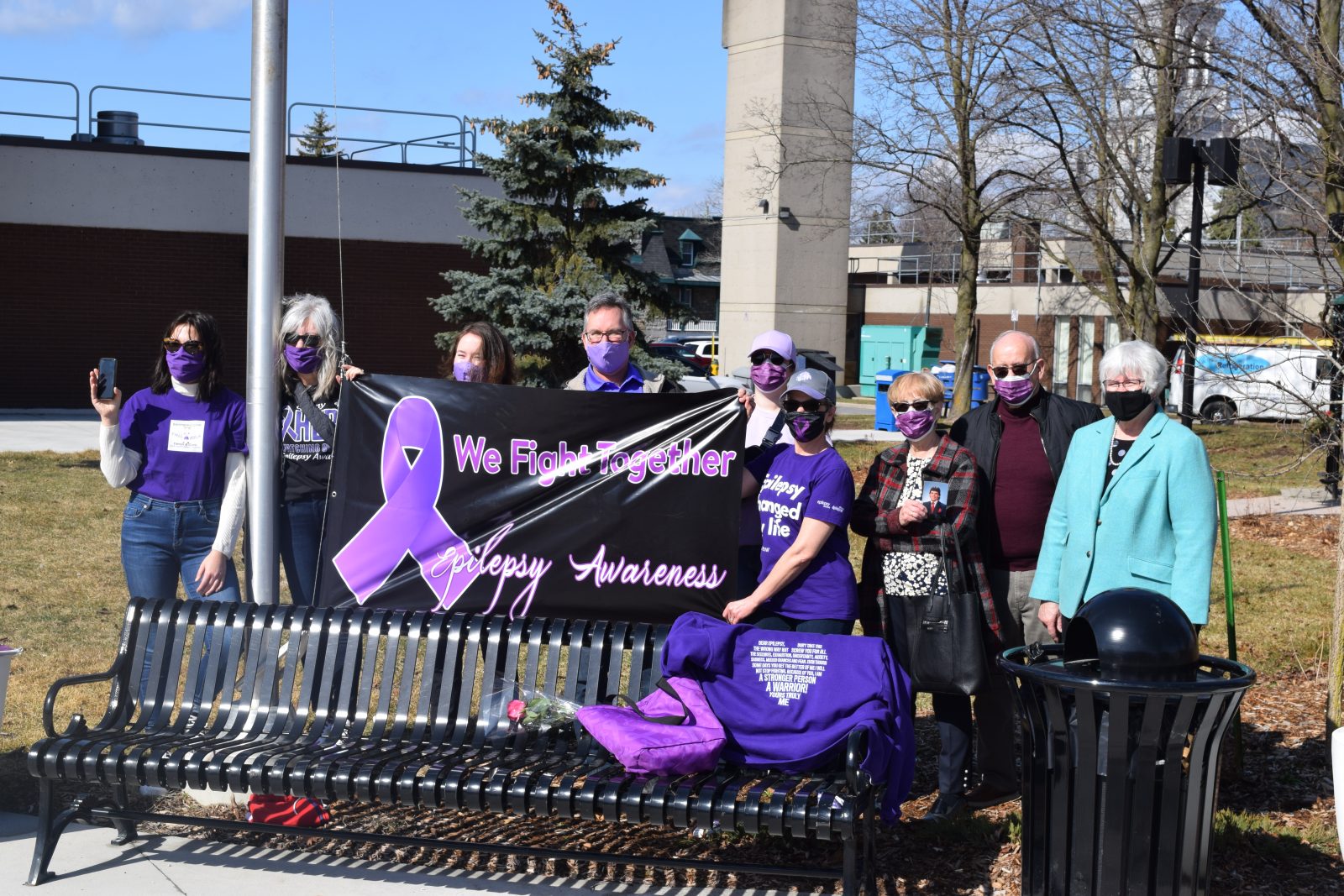CORNWALL, Ontario – The City of Cornwall recognized Epilepsy Awareness Day with a flag raising at City Hall on Thursday, March 25, 2021.
Epilepsy Awareness Day itself, which is on Friday, March 26, is also called Purple Day, and is a day where those who support epilepsy awareness are asked to wear purple.
Among those at the flag raising at City Hall was Louise Blanchet, who shared her experience living with epilepsy with Seaway News.
“I have lived with epilepsy since birth. I had petit mals, now called absence seizures, as a child but I was too young to understand or express what I was feeling,” she said. At nineteen I suffered my first grand mal seizure, now called tonic clonic. Only then did I receive a diagnosis of; Congenital Aqueductal Stenosis of large posterior lateral ventricles. In other words I have narrow tubes at the back of my brain that don’t drain properly which causes my seizures and auditory sounds; i.e. buzzing in my ears.”
Blanchet explained that there can be a rang of causes of epilepsy includling: head injuries, lack of oxygen at birth, brain tumours, problems in development of the brain, stroke, brain tumours, genetic conditions, meningitis or encephalitis.
Purple Day itself began in 2008 when it was started by a young Canadian girl Cassidy Megan who lives with epilepsy. Megan chose purple for the colour of Epilepsy Awareness because lavender is the international flower of epilepsy.
Blanchet explained how she has learned to cope with living with epilepsy.
“Epilepsy has affected my life in many ways. I have built a shield around myself, also called humour, to try and make people comfortable around me,” she said. “Some people are visibly awkward when they learn of my condition, “you don’t look sick”. I have been treated like an incapable person. I have had to educate people on how inappropriate it is to make seizure jokes. I did not tell potential employers for fear of being discriminated, this was the 1980’s. To this day I have never had a driver’s license because I’ve never been seizure free for a full year.”
She hopes that initiatives like Purple Day will help promote more understanding around epilepsy.
“I feel some people don’t understand that epilepsy is more than seizures,” Blanchet explained. “Many people living with epilepsy also live with anxiety and depression. Some of us suffer from memory loss, and lack of balance due to our condition. Some people have asked me if I can control it or “snap out of it”. The answer is; “no, but I wish I could”. Then there’s the exhaustion, dizziness, anxiety, headaches, confusion, shame, and memory loss after a seizure.”




